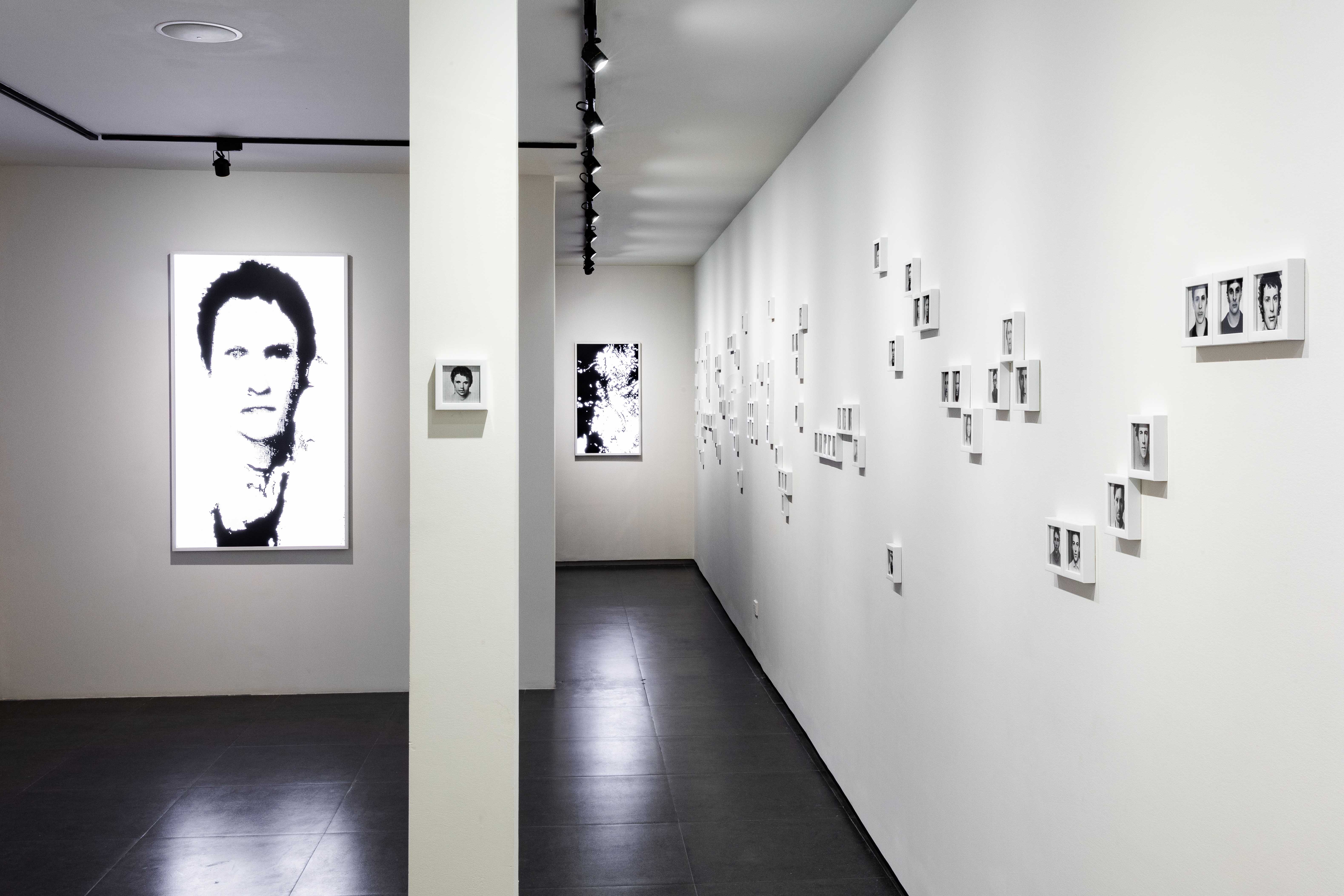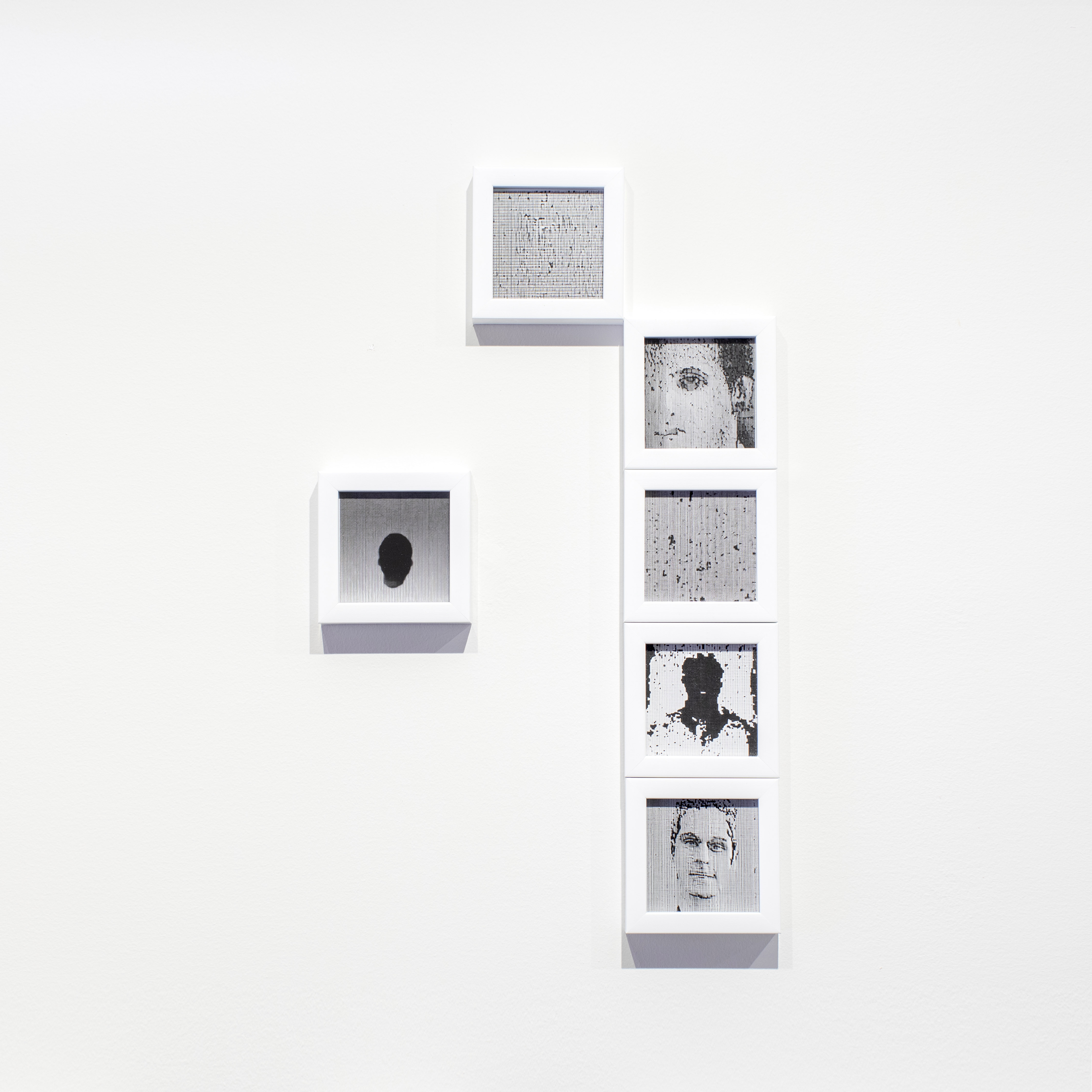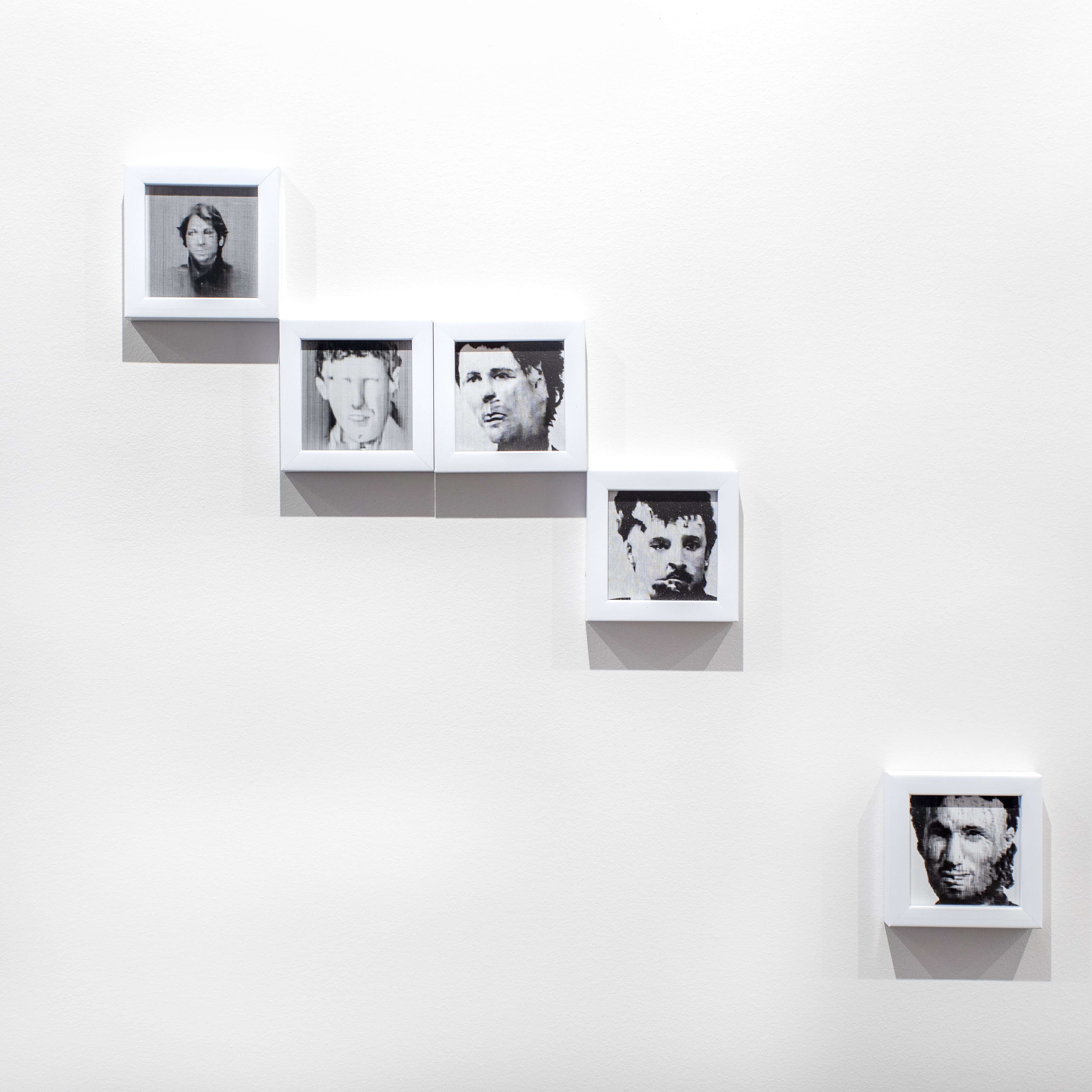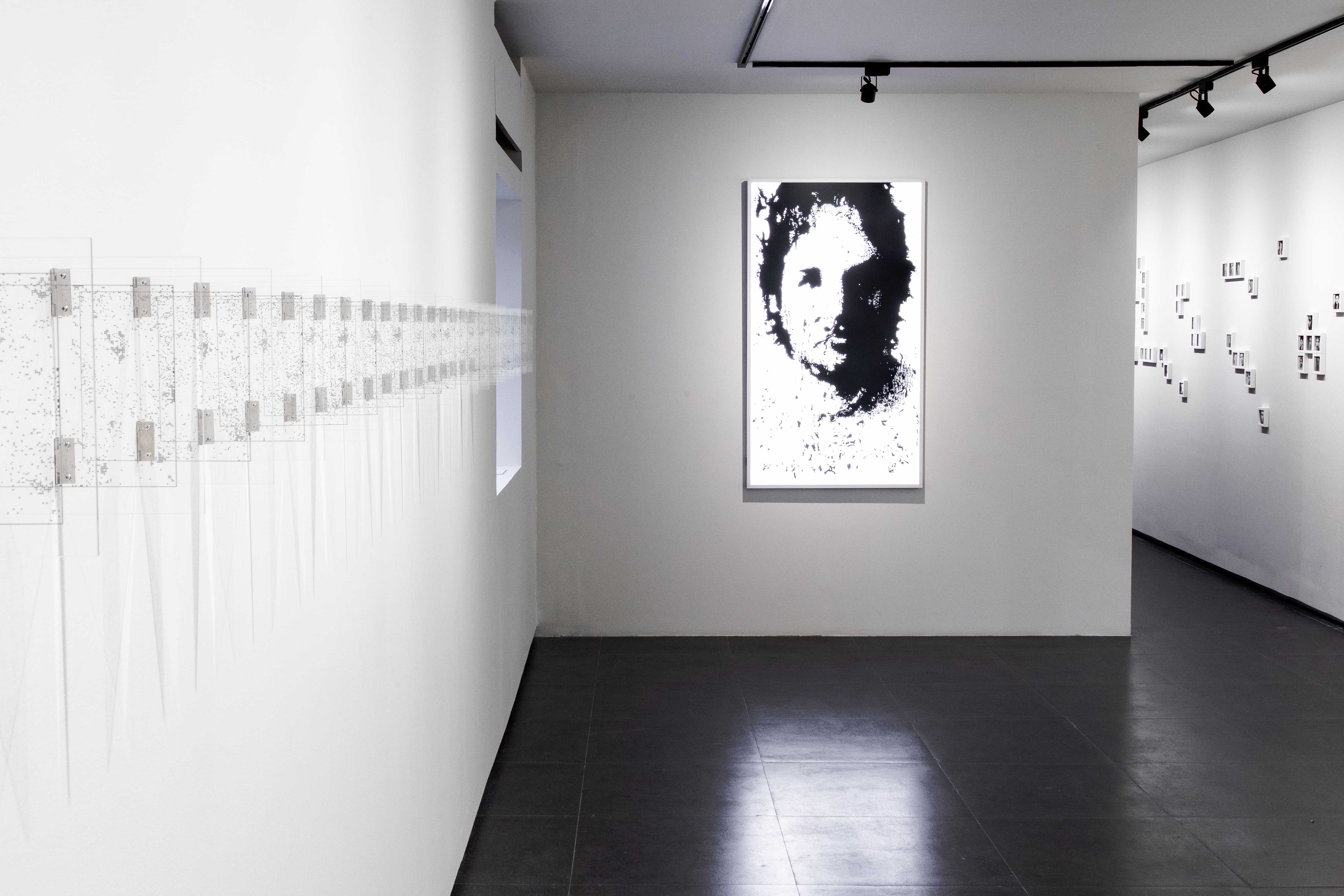Earlier this month, the artist Jao San Pedro presented reflections on her artistic trajectory at the Tarzeer Pictures gallery space in Makati. The talk, titled ‘On Summoning & Shapeshifting’, surveyed a practice charged with a queer physicality, invoking the body’s movements, failures, and mutations as material for envisioning portals for subversion. Prompted by a desire to defy binaries as a transgender woman, San Pedro’s art mirrors the strain and scatter of a body wanting to disappear. 2022’s Misnomer featured five hundred self-portraits of San Pedro processed through Instagram filters of feminization and masculinization, rendering a procedure that stretched out a self towards anonymity. The self as processed, malleable data.
“Formlessness is what I strive for,” San Pedro said towards the end of her talk. Speaking about her past and present works, she constructed her own vocabulary of formlessness, describing Misnomer as a kind of “breaking up of personhood”. Disembody, a 2018 collage work that melded queer pornography into acetate prints, found her “zooming into specific images to break down the body into a non-categorical form.” Her ongoing show at Tarzeer Pictures, Willing the Sun to Rise Twice, inquired into “the generative potentials of losing someone”. It was for her “an exhibition of errors”.
All this can sound a little too erudite but there’s also something undeniably invigorating in hearing San Pedro articulate her practice in her own terms as she navigates conceptual frameworks within more personal territories. That negotiation, seen in the warped beauty of her art, is exciting, disorienting, and sometimes even heartbreaking.
With her ongoing show, which was inspired by a break-up, she leans into the biographical even more. Willing the Sun to Rise Twice is a strangely affecting compendium of image, sound, and video, all of which were processed through an elaborate sequence of AI generators, creating varieties of distance and loss from the original input. In a diagram appended to the show’s exhibition notes, a flowchart with terms like “image sonification” and “portrait generation” outlines San Pedro’s painstaking process. But despite all the machinery involved in her process, the genesis of the show is strikingly human: using the final voicemail sent by her ex as the original input, San Pedro conjures up a former lover’s presence while simultaneously undercutting it.
San Pedro deploys a chain of AI generators to filter, contort, and visualize the voicemail into arresting forms. Scattered in irregular blocks throughout one side of the exhibit, ‘Portrait of a Lover 1-100’ consists of the same data gathered from the voicemail but converted into a collection of deformed, glitched-out faces. Using information taken from the voicemail transcript, San Pedro extracted its semantic fingerprint which became the basis of these numerous AI generated portraits. Each frame was then interpolated to create ‘Portal 1: Lover’, a looping video synthesis of these images and their transformations. Both works feel akin to a séance in their attempt to surface contact with a vanished beloved and yet, with all their disfigurement, they also evoke the irreparable loss—those gaps and fissures left in the heart—that emerges after a break-up. It is in the moments of hesitation that take place between yearning and devastation that San Pedro finds a form, or at least a glimpse of it.
The most insightful moment I could recall from San Pedro’s presentation was when she described this current show as “most like a self-portrait” compared to all her previous works. This is the first time, she said, that she used another human as a centerpiece for an exhibition. Framing these highly abstracted and fragmented forms which don’t even feature a real face as a series of self-portraits is surely ambitious but there’s a measure of truth to that framing nevertheless. Technological tricks aside, what could be more intimate than sharing the nitty-gritties of your break-up with the rest of the world, putting such a private moment, possibly loaded with shame and guilt, out there for the public to scrutinize and intellectualize over?
All throughout Willing the Sun to Rise Twice, we are submerged inside the artist’s process, diving deep into a queer interiority at the brink of breakage. There seems to be an overarching argument to be made here: that perhaps it is not in the eventual product, but the process, in the operations of fracture and recombination, shattering and seeking structure, through which we may keep afloat and look out towards another sunrise.
Willing the Sun to Rise Twice continues until June 22 at Tarzeer Pictures in Makati City.
Sean Carballo is a writer and undergraduate from the Ateneo de Manila University.
All photos courtesy of Tarzeer Pictures.




